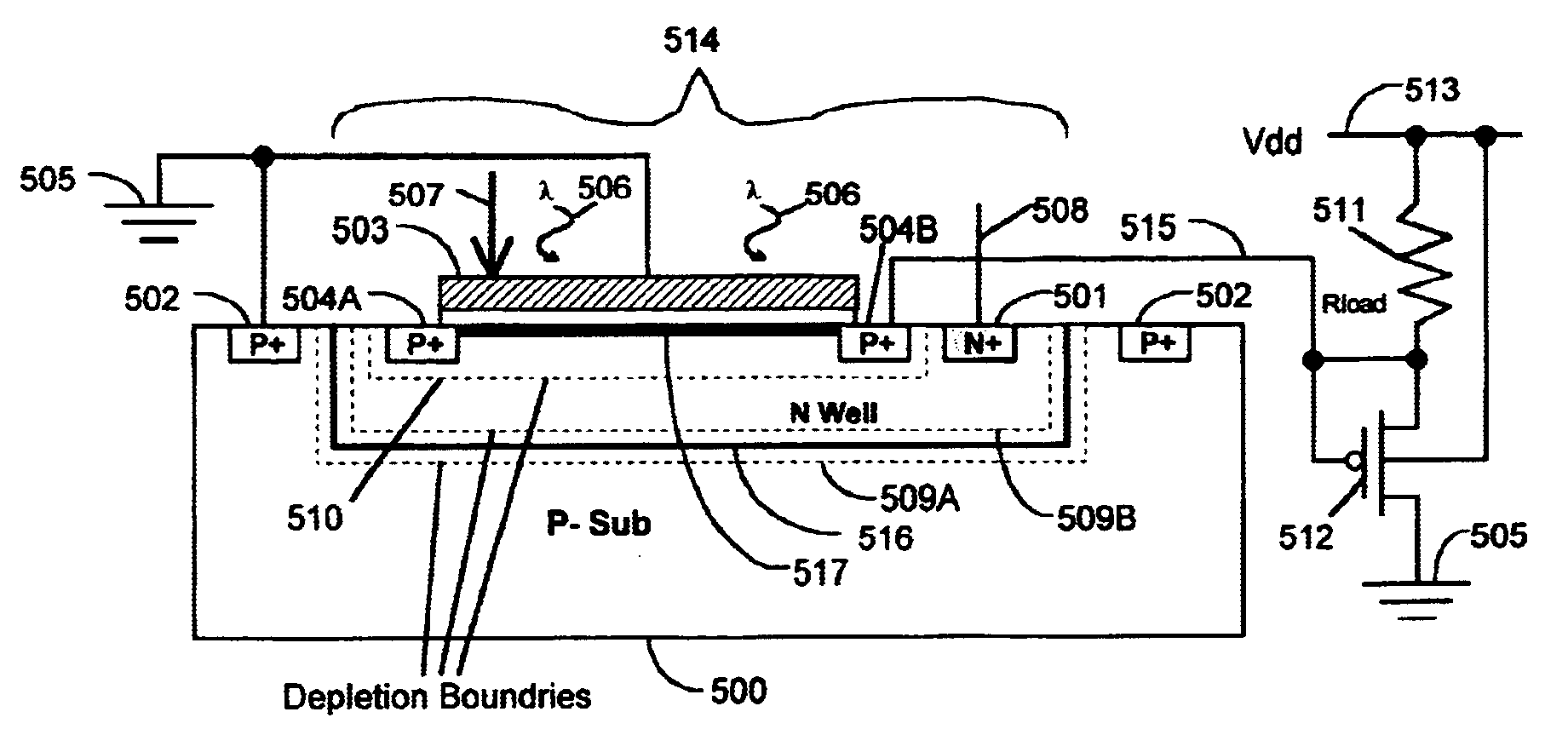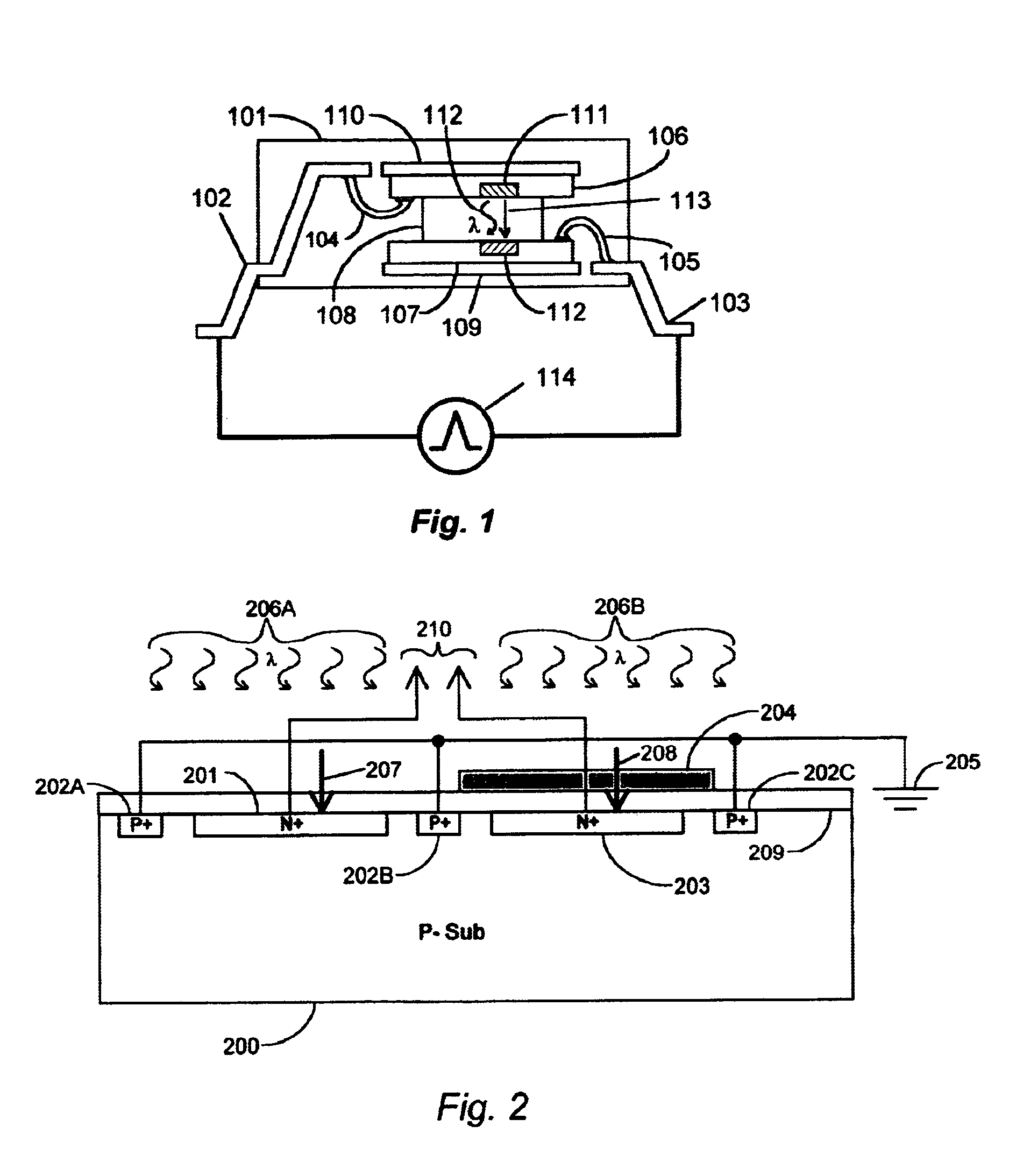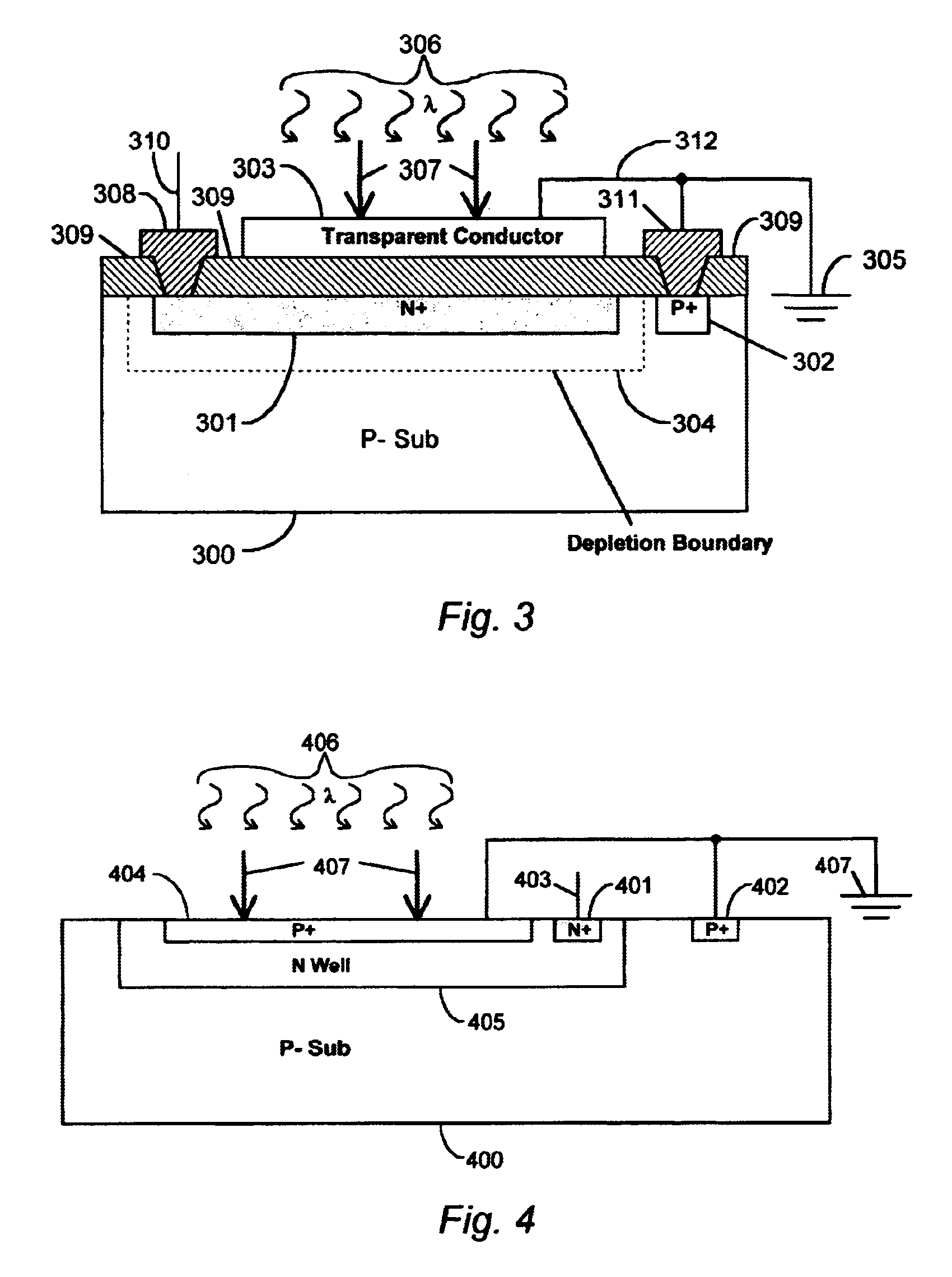Photo detector methods to reduce the disabling effects of displacement current in opto-couplers
a technology of displacement current and photo detector, which is applied in the direction of material analysis, instruments, radio frequency controlled devices, etc., can solve the problems of affecting the normal communication process of the opto-coupler, data extraction is difficult, and errors are easy to be mad
- Summary
- Abstract
- Description
- Claims
- Application Information
AI Technical Summary
Benefits of technology
Problems solved by technology
Method used
Image
Examples
Embodiment Construction
FIG. 2 shows an example of a differential light detector which can be used to null out a displacement current induced by the light source elements. Placed in a P type silicon substrate 200 is an N+ implant or diffusion 201, a second N+ implant 203, and three P+ implants, 202A, 202B, and 202C. The first N+ implant 201 forms an N+ / P junction diode and the second N+ implant 203 forms a second N+ / P junction diode. P+ implants 202A, 202B and 202C form substrate ties or a means of connecting metal conductors to the P substrate 200. Thus, the P substrate 200 areas near the N+ junctions 201 and 203 are robustly tied to ground 205 via the P+ ties 202A, 202B, and 202C.
The diode junction formed with the N+ implant 201 is used as a photo detector in this example. Light 206A coming from the LED source passes through a transparent dielectric 209 such as SiO2 and into the diode formed by the N+ implant 201 thereby creating a photo current. The second diode formed with the N+ implant 203 is identic...
PUM
 Login to View More
Login to View More Abstract
Description
Claims
Application Information
 Login to View More
Login to View More - R&D
- Intellectual Property
- Life Sciences
- Materials
- Tech Scout
- Unparalleled Data Quality
- Higher Quality Content
- 60% Fewer Hallucinations
Browse by: Latest US Patents, China's latest patents, Technical Efficacy Thesaurus, Application Domain, Technology Topic, Popular Technical Reports.
© 2025 PatSnap. All rights reserved.Legal|Privacy policy|Modern Slavery Act Transparency Statement|Sitemap|About US| Contact US: help@patsnap.com



